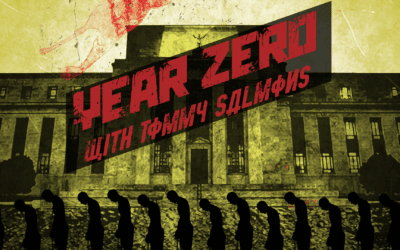In a letter to the editor in the April 27th edition of the Wall Street Journal, a faculty member of Northwestern University explained why snowflakes behave the way they do on college campuses. The letter is pasted at the end of this commentary.
In an astonishing display of mental gymnastics, mental yoga, and mental Pilates, Karl T. Muth, Ph.D., explained to intellectual inferiors like me that the cause is capitalistic consumerism. As is the case for healthcare, Muth said, students nowadays expect to be treated like customers and will complain when they don’t get what they want.
Well, he has a point. After all, a day doesn’t go by without scenes on the news of students gathering at Starbucks, Chipotle, Apple stores, and Prius dealerships to scream and riot about social justice, to stop other patrons from engaging in free speech with each other, and to demand trigger warnings and safe zones. In fact, that’s why I don’t patronize these places and prefer to make coffee at home, eat at real Mexican restaurants in the barrio, own a Galaxy phone, and drive a car with an internal-combustion engine.
And then there are the businesses that try to indoctrinate their customers. Holiday Inn, Marriott, and Hilton come to mind. When customers pay for a room, these hoteliers place them on floors with different social justice themes and posters galore, and then require them to attend mandatory orientations and ongoing refreshers on diversity and community. The corporate indoctrination is incessant, beginning at check-in and continuing to check-out.
Oh, wait, that’s what happens in college residence halls, not in hotels. How do I know? My son was a residence hall assistant at a large public university. He would tell me stories almost daily about the zeal and blind obedience of other assistants who had succumbed to the administration’s indoctrination and thus behaved like student Maoists during the Cultural Revolution in China, including snitching on those who questioned the party line.
College faculty and staff are so far removed from a real consumer market that they see nothing unethical or untoward about indoctrinating “customers” who are paying for a room, courses and a degree—not for ideological brainwashing.
Muth could have made some valid points about the mass consumerism of American society, but he picked two industries, higher education and healthcare, that don’t operate in a true consumer market where the customer is king. Neither of these industries has honest, open pricing, because prices and supply and demand have been distorted by the government.
In the case of higher education, the distortions are the result of subsidies, grants, student loans, ever-increasing government diktats, hidden racial and ethnic quotas, and non-published discounts and scholarships that vary depending on whether a student is in-state, out-of-state, on the student’s family income, and on other factors known only to college admission officers, such as the value placed on legacy admissions. Moreover, the college bill is footed by parents in most cases, not by students, so that students are not the real customers. Not only that, but as my wife and I found through the ordeal of helping our son choose a college, it’s nearly impossible to get reliable statistics from colleges on graduation rates, flunk-out rates, transfer rates, and starting salaries by major. A pig in a poke comes to mind.
With respect to healthcare, the distortions are so bad that a true consumer market is essentially non-existent in medical care/insurance. Because of third-party payments, patients don’t even know the prices charged by medical providers. As such, the true customer is the government or employer who pays the tab, not the patient.
I couldn’t find a price list at the Northwestern University website, but a best guess is that a four-year degree and room and board cost about $180,000. For that amount, students get faculty like Muth, who doesn’t even know what a true consumer market looks like.
* * *
Letter to the Editor
The Wall Street Journal, April 27, 2017 3:12 p.m. ET
In “Those ‘Snowflakes’ Have Chilling Effects Even Beyond the Campus” (op-ed, April 22), Heather Mac Donald suggests the source of “snowflake” behavior among millennials on college campuses comes from a cultural orientation that is contra-Occidental and that students view themselves as victims of a Western, capitalist, racist, heterocentric, gender-insensitive society. I’m an educator who sees college students every week. “Snowflake” culture has been incubated in a primordial ooze much more toxic: a very Western, very capitalist cocktail of consumercentric messages.
Many students view themselves principally as customers. The campus environment is a thing to be purchased and, like a purchase on Amazon, should meet the customer’s expectations or be sent away, instantly, with free return shipping and a full refund. We used to be participants and contributors; now we are customers and critics. This change of attitude is not unique to the university campus. It can also be seen in health care: “I paid for you, doctor, and I expect you to prescribe the opioids I seek. I’m not getting what I want out of this relationship. I’m the customer, I’m not paying you to be called an addict. I’m a victim. I’m in pain. What do you mean a referral? I’m leaving a bad review on Yelp!”
This kind of shallow, entitled, needlessly adversarial, accusatory exchange is not rooted in some anti-Western leftist hate campaign originating on college campuses. Instead it originates in the cheap postwar, one-liner bits of philosophy we’ve chanted together, phrases like “the customer is always right” and “the squeaky wheel gets the grease.” If these are the big ideas in society, don’t be surprised when the customers start squeaking.
Karl T. Muth, Ph.D.
Northwestern University
Chicago





























